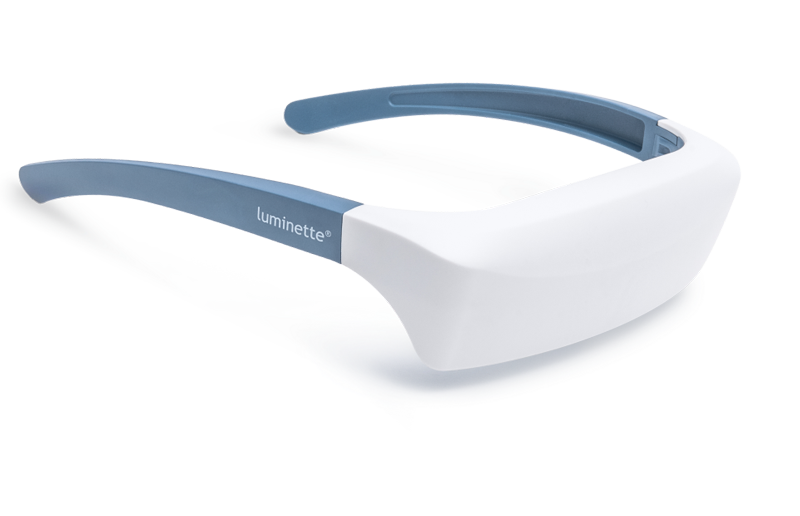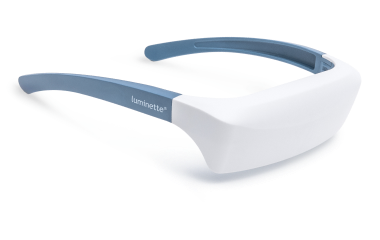Chronobiology muliggør studiet af kroppens adfærd. Indtil 2002 kunne vi kun skelne mellem to typer fotoreceptorer i øjet—kegler (ansvarlige for syn om natten) og stave (ansvarlige for syn om dagen). I 2002 gjorde forskere en opdagelse, der muliggjorde udvidelsen af lysbehandlingens anvendelsesområde: faktisk findes der en tredje type fotoreceptor, denne gang ikke-visuel. Også kendt som ganglion pigmentceller, er disse fotoreceptorer involveret i reguleringen af døgnrytmer gennem lysets effekt.
Lys er meget mere end bare det, vi stoler på for at se verden omkring os. Det spiller en afgørende rolle i utallige biologiske processer, der styrer vores velbefindende. Fra at regulere vores søvn-vågne cyklus til at påvirke vores humør og energiniveauer, interagerer lys med vores kroppe på dybtgående måder. Dette blogindlæg udforsker den mangefacetterede rolle, som lys spiller på kroppen, guidet af indsigt og eksempler skræddersyet til sundhedsinteresserede, wellness-søgere og medicinske fagfolk.
Mekanismen for lysets effekt består af forskellige stadier
Lysgennemtrængning: Lys trænger ind i øjet og aktiverer de specialiserede gangliepigmentceller i nethinden. Disse celler er følsomme over for ændringer i lysintensitet og er afgørende for at regulere kroppens respons på lys.
Signaltransformation: Fotoreceptorerne i øjet, som inkluderer stave og tappe, omdanner det indkommende visuelle signal til et elektrisk signal. Denne proces er essentiel for at transmittere information om lys til hjernen. Det elektriske signal sendes derefter videre gennem synsnerven, som fungerer som en kommunikationsvej, til vores biologiske urregulator, kendt som den suprachiasmatiske kerne (SCN).
Signalfortolkning og hormonjustering: Den suprachiasmatiske kerne, der er placeret i hypothalamus, fortolker det elektriske signal. Denne lille, men magtfulde del af hjernen spiller en afgørende rolle i at opretholde vores daglige rytmer. Den kommunikerer med pinealkirtlen for at regulere hormonproduktionen. Som følge heraf justerer kirtlen udskillelsesniveauerne af søvnhormonet melatonin og vågehormoner som kortisol, serotonin og adrenalin. Disse hormoner hjælper med at synkronisere vores søvn-vågne cyklus med det ydre miljø, hvilket fremmer generel sundhed og velvære.
De biologiske effekter af lys på kroppen
Vores kroppe har udviklet sig til at være i sync med de naturlige rytmer af lys og mørke. Den 24-timers cyklus, kendt som den cirkadiske rytme, styrer mange fysiologiske processer såsom hormonfrigivelse, stofskifte og cellefornyelse. Lys er det primære signal, der indstiller vores indre ure til denne cyklus. Når vi udsættes for naturligt lys i løbet af dagen, signalerer det til vores kroppe, at vi skal være vågne og aktive. Når solen går ned, udløser svagere kunstigt lys eller mørke produktionen af melatonin, hvilket forbereder os på søvn.
Hvordan lys påvirker den cirkadiske rytme
Den cirkadiske rytme er kroppens naturlige ur, der styrer de fysiologiske processer, der foregår over en 24-timers cyklus. Lys eksponering er et primært signal, der hjælper med at regulere dette indre ur. Når lys trænger ind i vores øjne, signalerer det til hjernen at justere kroppens funktioner derefter. Morgenlys fremmer produktionen af serotonin, som øger humør og fokus, mens aftenmørke udløser produktionen af melatonin og forbereder os på søvn.
Forskellige typer lys påvirker vores cirkadiske rytme på forskellige måder. Naturligt sollys tilpasser vores indre ur til dag-nat-cyklussen og fremmer synkroniserede kropsfunktioner. Omvendt kan overdreven eksponering for kunstigt lys, især blåt lys fra skærme, forstyrre denne rytme og føre til søvnforstyrrelser og relaterede sundhedsproblemer. Forståelsen af, hvordan lys eksponering påvirker den cirkadiske rytme, er nøglen til at opretholde optimal sundhed og velvære.
Lysets rolle i reguleringen af søvn-vågne cyklusser
Vores søvn-vågne cyklus er stærkt påvirket af lys eksponering. I løbet af dagen hjælper eksponering for stærkt lys med at holde os årvågne og opmærksomme. Om natten signalerer fraværet af lys kroppen om at slappe af og forberede sig på søvn. Denne naturlige proces fungerer bedst, når vi følger en regelmæssig tidsplan, hvilket muliggør en glidende overgang mellem søvn- og vågen tilstand.
Forstyrrelser i lys eksponering, såsom skifteholdsarbejde eller uregelmæssige søvnmønstre, kan føre til ændrede søvn-vågne cyklusser. Over tid kan disse forstyrrelser bidrage til søvnforstyrrelser som søvnløshed, hvilket gør det svært at opnå en rolig søvn. Indarbejdelse af sunde lysvaner, som at få naturligt lys i løbet af dagen og minimere skærmtid før sengetid, kan hjælpe med at regulere disse cyklusser og forbedre den samlede søvnkvalitet.
Lysets effekt på hormonproduktionen (Melatonin og Cortisol)
Lys spiller en vigtig rolle i hormonreguleringen, især melatonin og cortisol. Melatonin, kendt som "søvnhormonet," udskilles som reaktion på mørke og fremmer en følelse af ro og parathed til søvn. Omvendt påvirkes cortisol, "stresshormonet," af morgenlys, hvilket øger årvågenhed og energi.
Balancen mellem disse hormoner er afgørende for at opretholde sunde fysiologiske processer. Tilstrækkelig lys eksponering i løbet af dagen understøtter produktionen af cortisol, hvilket forbedrer præstationen i dagtimerne, mens dæmpet belysning om aftenen fremmer frigivelsen af melatonin og dermed en rolig søvn. At opretholde denne hormonbalance er essentielt for det generelle velbefindende og kan opnås ved at tilpasse lys eksponeringen til de naturlige dag-nat-cyklusser.
Lysets indflydelse på mental og følelsesmæssig sundhed
Udover at regulere fysiologiske processer har lys også en betydelig indvirkning på vores mentale og følelsesmæssige velbefindende. Eksponering for naturligt sollys udløser frigivelsen af serotonin, hvilket øger humør og energiniveauer. Omvendt kan begrænset eksponering for naturligt lys eller overdreven eksponering for kunstigt lys bidrage til lavt humør og andre lidelser.
Sammenhængen mellem lys eksponering og humør
Lys eksponering har en dybtgående indvirkning på vores humør og følelsesmæssige velvære. Tilstedeværelsen af sollys stimulerer produktionen af serotonin, en neurotransmitter forbundet med følelser af lykke og positivitet. Derfor kan regelmæssig eksponering for naturligt lys forbedre humøret, øge energiniveauet og styrke den generelle følelsesmæssige sundhed.
Omvendt kan begrænset adgang til dagslys føre til humørsvingninger og endda bidrage til mentale helbredstilstande. Sæsonbetingede humørsvingninger, en type lidelse der opstår i de mørkere måneder, er en direkte følge af reduceret sollys eksponering. At inkorporere mere naturligt lys i vores daglige liv, hvad enten det er gennem udendørs aktiviteter eller blot ved at tilbringe tid i veloplyste rum, kan markant forbedre humør og følelsesmæssigt velvære.
Lysets rolle i håndtering af humørsvingninger og angst
Udover at behandle sæsonbetingede humørsvingninger spiller lys eksponering også en rolle i håndteringen af generelle humørforstyrrelser og angst. Studier har vist, at personer, der udsættes for mere naturligt lys, oplever reducerede symptomer på humørsvingninger og angst. Denne forbindelse skyldes lysets indflydelse på neurotransmitterregulering, især serotonin og dopamin.
At inkorporere strategier for at øge lys eksponering, såsom at tilbringe tid udendørs, bruge lysterapien eller skabe lyse indendørs miljøer, kan fungere som supplerende tilgange til traditionelle behandlinger for depression og angst. Disse tiltag kan hjælpe med at forbedre humørstabiliteten og tilbyde en ikke-invasiv måde at støtte mental sundhed på.
Luminette 3 light therapy glasses er innovative briller designet til at lade dig nyde en lysterapisession, mens du udfører dine almindelige aktiviteter. I modsætning til traditionelle terapilamper har Luminette 3-briller en kunstig lyskilde, der sender en sikker lysstråle ind i dine øjne uden at forårsage nogen blænding eller hindre dit klare syn.
For at bruge dem skal du blot bære brillerne og trykke på en knap for at aktivere lyset, og din fototerapisession begynder. Disse briller er brugervenlige og kompatible med dem, der bærer briller med styrke eller kontaktlinser, hvilket sikrer, at der ikke sker nogen forstyrrelse af syn eller komfort.
Med bekvemmeligheden ved Luminette 3 er det ikke længere nødvendigt at sidde ved siden af en stationær lysterapilampe i 30 minutter hver dag. Friheden til at bevæge sig betyder, at du kan forberede morgenmad, fordybe dig i en fængslende bog, indhente dine yndlings-tv-shows, arbejde på dine computeropgaver eller endda lave lette øvelser, alt imens du modtager din terapeutiske lysbehandling. Uanset om du er hjemme eller på farten, tilbyder Luminette 3 en fleksibel og effektiv løsning til at integrere lysterapien i din dagligdag.
Lysets indvirkning på fysisk sundhed
Lysets effekt på vores fysiske sundhed går ud over søvn og humørregulering. Forskning har vist, at udsættelse for naturligt lys giver mange fordele for vores fysiske velbefindende, fra at øge vitamin D-niveauer til at støtte immunfunktionen.
Hvordan lys påvirker syntesen af vitamin D
En af de mest kendte roller for lys i fysisk sundhed er dets involvering i syntesen af vitamin D. Når huden udsættes for ultraviolet B (UVB) stråler fra sollys, igangsætter det produktionen af vitamin D, et afgørende næringsstof for knoglesundhed, immunfunktion og generel vitalitet.
Vitamin D-mangel er blevet forbundet med forskellige sundhedsproblemer, herunder svækkede knogler, kompromitteret immunforsvar og øget risiko for kroniske sygdomme. At sikre tilstrækkelig sollysudsættelse, samtidig med at man undgår overeksponering, er nøglen til at støtte optimale vitamin D-niveauer. For dem i områder med begrænset sollys kan vitamin D-tilskud være nødvendigt for at opretholde tilstrækkelige niveauer og støtte generel sundhed.
Lysudsættelse og øjensundhed
Lysudsættelse har også betydning for øjensundhed. Mens naturligt lys er essentielt for at opretholde synsskarphed og øjets generelle funktion, kan overdreven udsættelse, især for kunstige lyskilder, føre til øjenbelastning og digital øjentræthed. Langvarig skærmbrug uden tilstrækkelige pauser kan bidrage til ubehag og synsrelaterede problemer.
For at beskytte øjensundheden er det vigtigt at praktisere god visuel hygiejne. Dette inkluderer at tage regelmæssige pauser fra skærme, bruge blålysfiltre og sikre tilstrækkelig belysning i vores omgivelser. Derudover kan tid udendørs og at lade øjnene tilpasse sig naturligt lys fremme øjensundhed og reducere risikoen for synsrelaterede problemer.
Lysets indflydelse på energiniveauer og træthed
Lysudsættelse påvirker i høj grad vores energiniveauer og modtagelighed for træthed. Udsættelse for naturligt lys i løbet af dagen hjælper med at øge årvågenhed og kognitiv ydeevne, mens mangel på lys kan føre til træthed og nedsat produktivitet. Dette er særligt relevant i kontormiljøer, hvor kunstigt lys måske ikke giver den samme energigivende effekt som naturligt lys.
Optimering af lysudsættelse gennem dagen kan forbedre energiniveauer og bekæmpe træthed. Enkle strategier, såsom at tage pauser udenfor, arbejde nær vinduer eller bruge Luminette-lysterapienheder, kan gøre en mærkbar forskel i at opretholde høje energiniveauer og reducere eftermiddagstræthed. At prioritere naturligt lys er en simpel, men effektiv måde at øge vitalitet og generel velvære på.
Light Therapy Lamp Drive er en innovativ lysbehandlingslampe designet til travle personer, så du bekvemt kan gennemføre din fototerapisession, mens du er på farten. Denne enhed er genialt udformet til at fastgøres problemfrit til solskærmen i dit køretøj. Med et enkelt tryk på en kontakt giver den en effektiv lysbehandlingssession, mens du kører til din destination.
For dem, der tilbringer mindst 20 minutter bag rattet hver dag, er Drive en perfekt følgesvend, der tilbyder en unik løsning til at integrere velvære i din daglige rutine. Dette er især fordelagtigt for personer, der tager på lange natkørsler, da det hjælper med at modvirke virkningerne af mørke og træthed.
Drive udsender et sikkert, stærkt lys ind i dine øjne, omhyggeligt designet til at øge din årvågenhed uden at forstyrre din kørsel. På den måde leverer det hele spektret af lysbehandlingsfordele, som inkluderer regulering af produktionen af melatonin, det søvnfremkaldende hormon, og dermed fremmer en tilstand af vågenhed og øget årvågenhed. Dette gør det ikke kun til et funktionelt værktøj, men også en værdifuld allieret i at opretholde dit generelle velbefindende og mentale skarphed under dine rejser.
Fordele ved lysbehandling
Lysbehandling tilbyder mange fordele ud over behandling af humørforstyrrelser, hvilket gør det til et alsidigt værktøj til at forbedre sundhed og velvære. Oprindeligt udviklet til sæsonbetingede humørsvingninger, er dets anvendelser vokset gennem årene.
Forskning fremhæver, at lysbehandling kan forbedre søvnkvaliteten ved at regulere søvnmønstre, især for dem med søvnløshed eller uregelmæssige skemaer. Det har særlig effekt på jetlag og søvnforstyrrelser relateret til skifteholdsarbejde. Ved at udsætte personer for kontrollerede doser af stærkt lys hjælper lysbehandling med at nulstille kroppens indre ur, fremmer bedre søvnhygiejne og tilpasser søvn-vågne cyklusser til naturlige døgnrytmer. Denne tilpasning øger energiniveauer og den generelle sundhed.
Derudover er lysbehandling gavnlig for kognitiv præstation. Studier antyder, at eksponering for stærkt lys i løbet af dagen forbedrer fokus, opmærksomhed og hukommelse. Disse kognitive fordele er især værdifulde for personer i krævende arbejdsmiljøer eller dem, der ønsker at optimere deres mentale evner. Forbedret produktivitet og problemløsningsevner gør lysbehandling attraktiv for personlig og professionel udvikling.
Desuden undersøger igangværende forskning lysbehandlingens potentiale i at stabilisere humør og støtte personer med kronisk træthedssyndrom. Efterhånden som vi fortsætter med at afdække dens virkninger, er lysbehandling klar til at blive en nøglekomponent i holistiske sundhedsstrategier.
Discover what role light plays on the body
with Roland Pec - sleep specialist and chrono-therapist

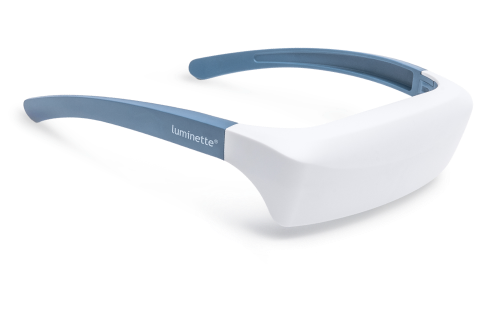


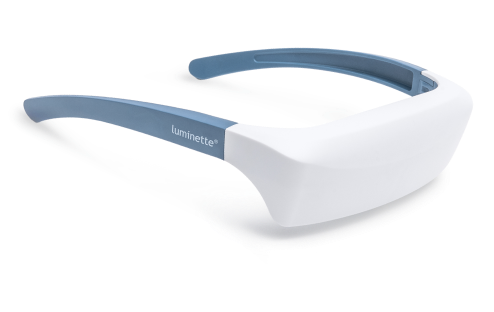





















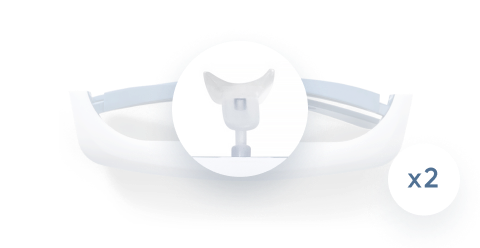
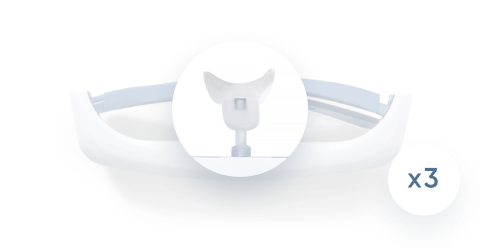
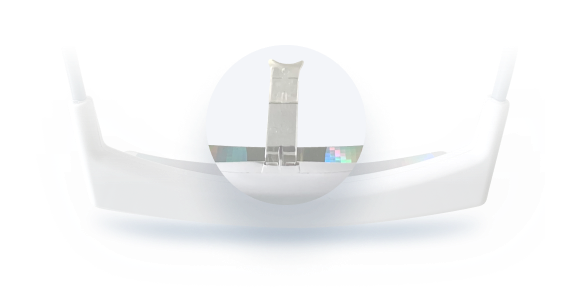




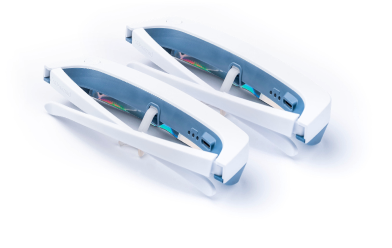
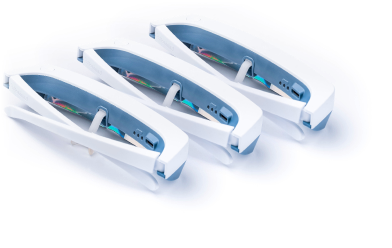





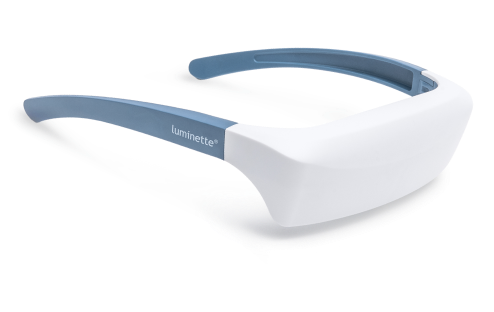
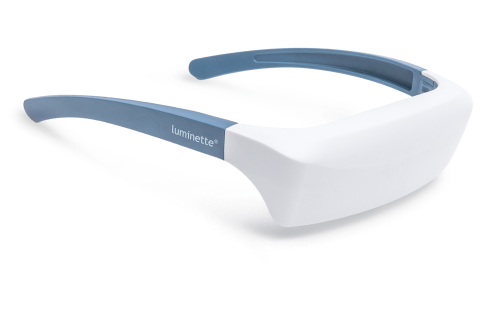
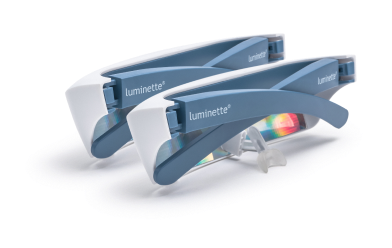








 Please note
Please note



